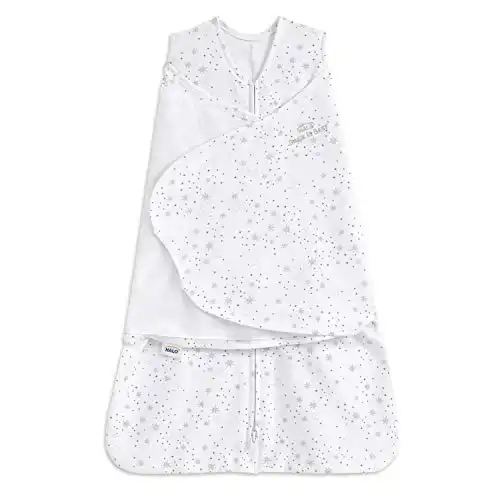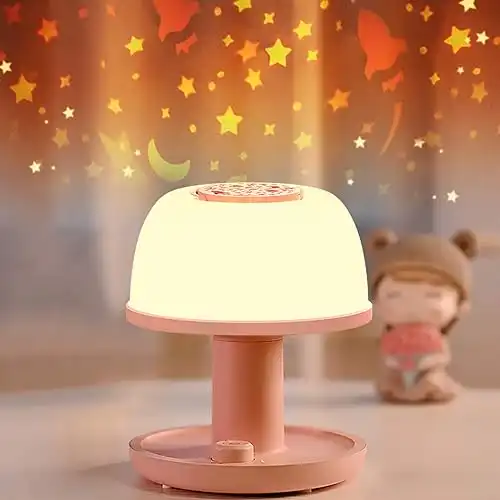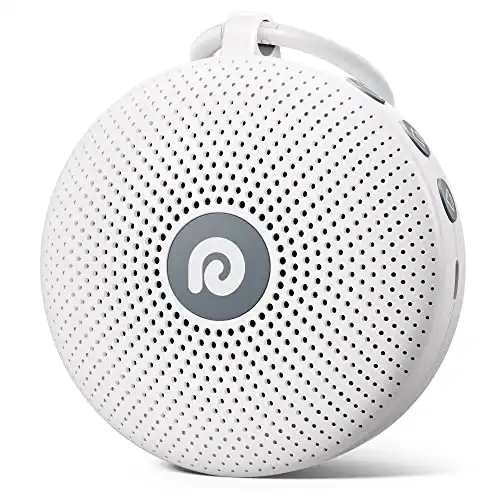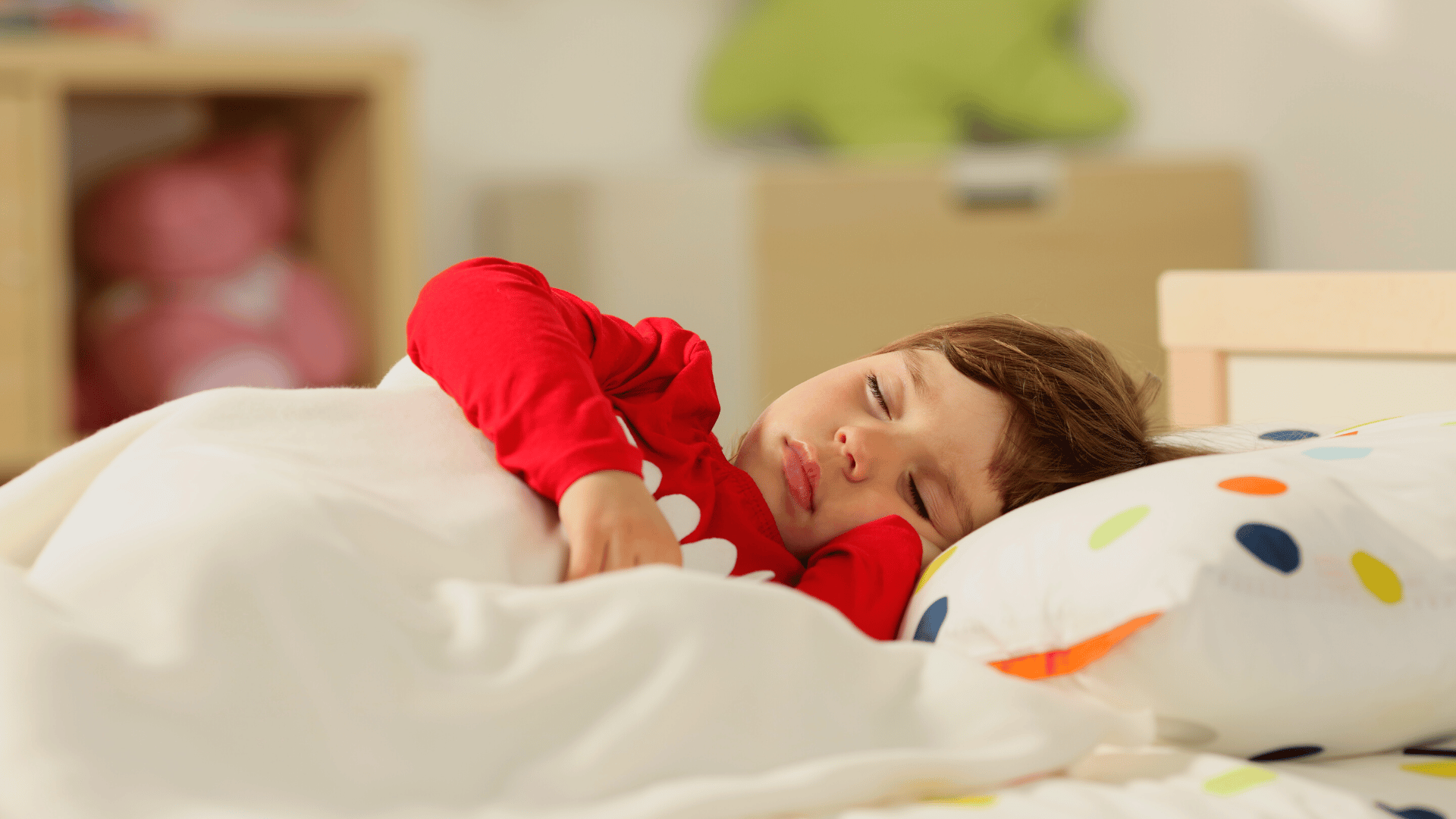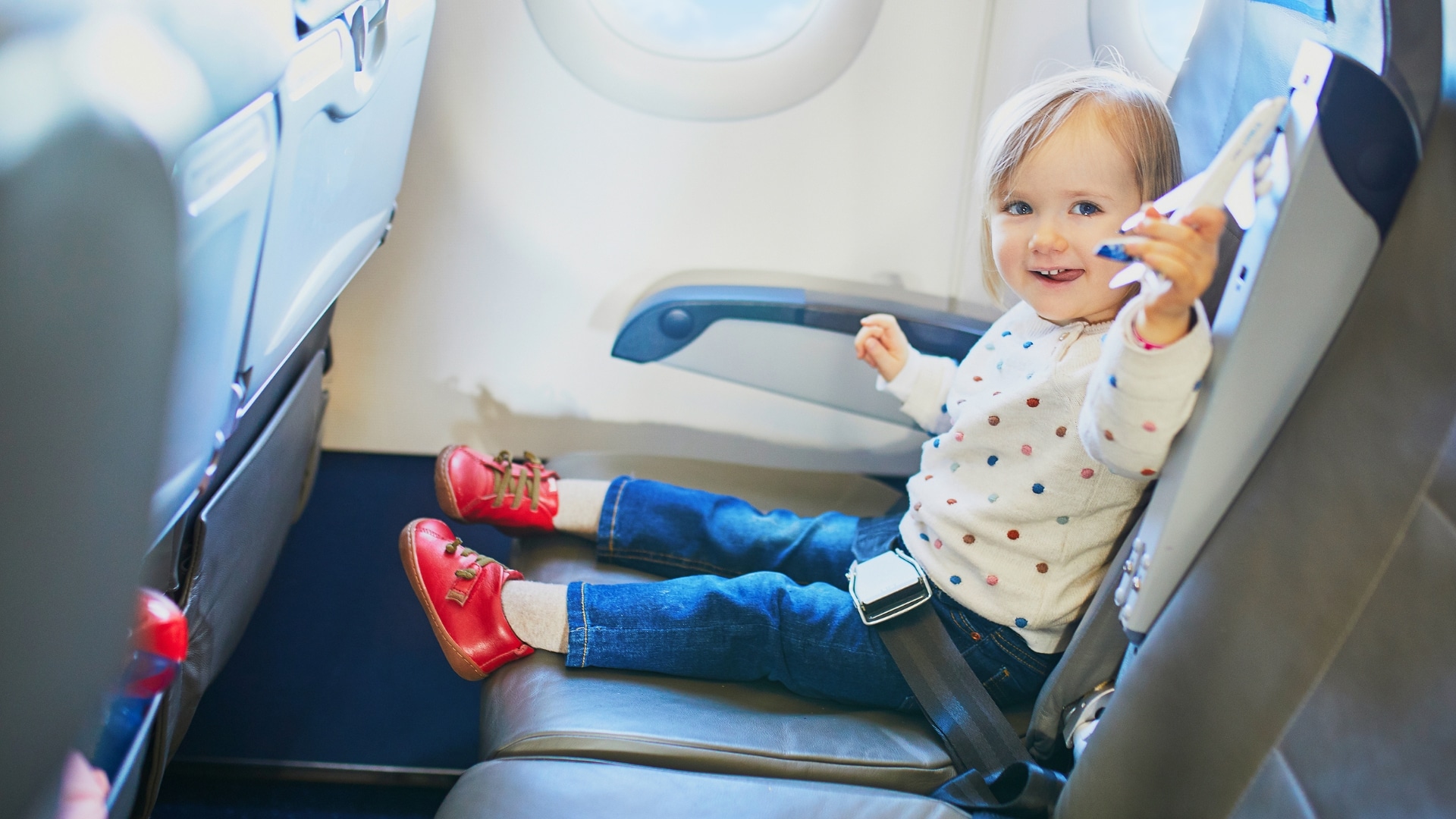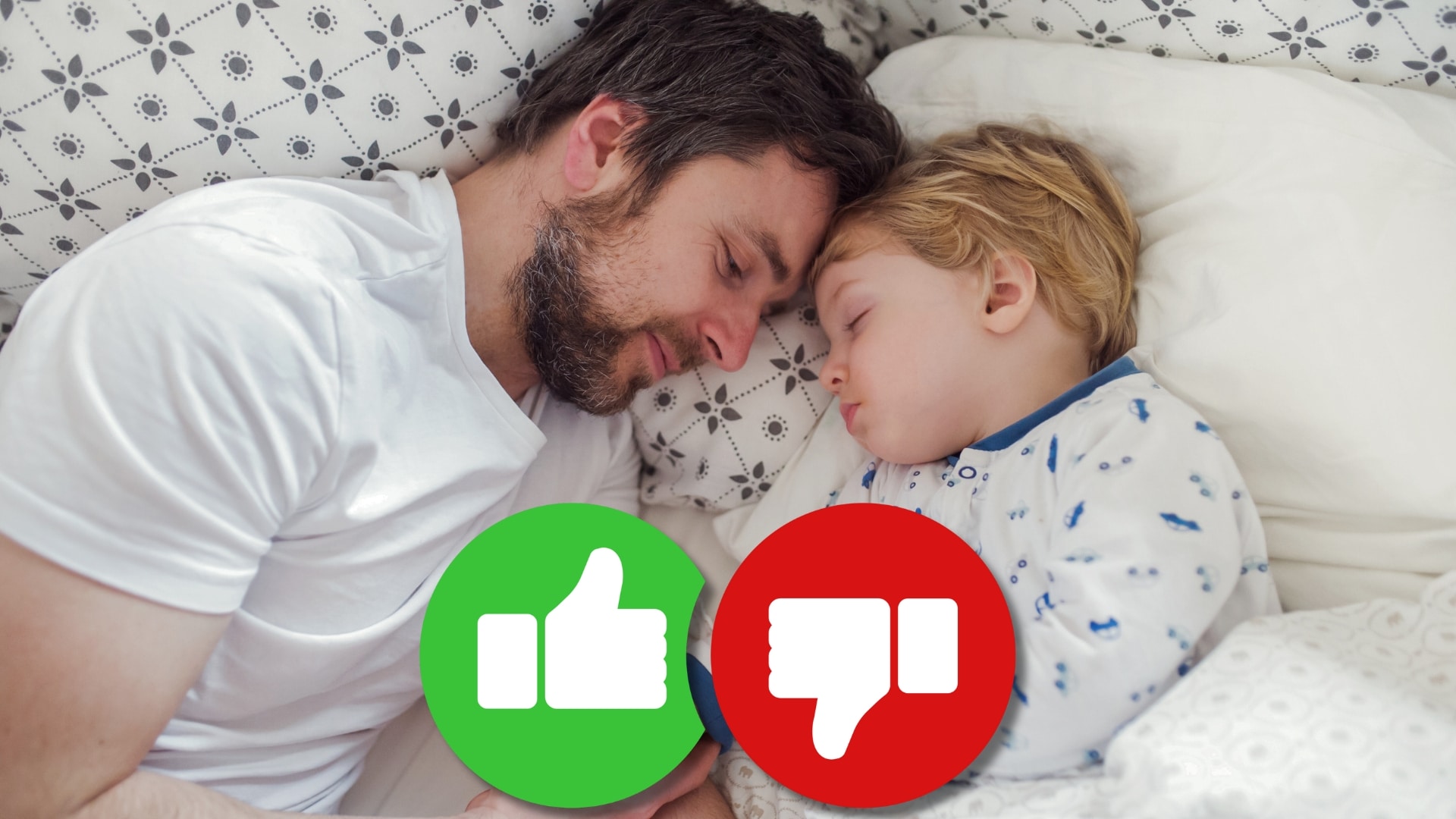Swaddling can calm fussy babies, it limits the startle reflex and keeps them cosy and warm, reminding them of being in the womb.
However, there will come a time when it is no longer safe for your little one to be swaddled.
Knowing when to stop swaddling your baby is an important transition that can impact their sleep routine. While it’s natural to be hesitant to make a change, there are signs that your baby is ready to move on.
In this article, we’ll explore when to stop swaddling and provide tips to help you navigate this transition smoothly.
How Do You Know When To Stop Swaddling?
You need to stop swaddling baby when your baby has started to become more mobile and shows signs of being able to roll over from their back to their front. Usually, this occurs when baby is between two and three months old. If you wish to be conservative with safe sleep recommendations, you can stop swaddling at around 8 weeks.
As with everything baby-related… No child is the same and they will all hit developmental milestones at different times. Some babies will simply wake up one day and decide they no longer like being swaddled regardless of whether they can roll over yet or not.
There is no exact time for when to transition from swaddle… But you certainly will need to if you baby shows the following signs:
Signs You Need To Stop Swaddling Baby
Here are 5 signs to watch out for that will tell you when to stop swaddling your baby:
- Baby is restless and fussy when trying to settle.
- They no longer have the startle reflex (also known as the Moro Reflex).
- Your baby is managing to break free from their swaddle blanket.
- Baby is able to roll from their back onto their tummy.
- Your little one fights being swaddled when they previously did not mind.
3 Dangers Of Continued Swaddling
Although swaddling is beneficial in the early weeks to help your little one sleep feeling safe and secure, swaddling for too long can be detrimental to your baby’s development and well-being.
1. Suffocation
It is very important that you stop swaddling once your baby shows signs of rolling over.
When swaddled babies roll to their tummies, they do not have free hands to push up their chest and move their face to breathe, which greatly increases the chance of suffocation (a risk factor of SIDS – sudden infant death syndrome).
2. Overheating
Overheating, waking with damp hair and flushed cheeks, rapid breathing and sweating from being swaddled is another risk when your little one becomes more active which can lead to SIDS.
If your baby is wriggling and trying to move more or succeeding in getting out of their swaddle then it is a sure sign that your baby is ready to be transitioned out of their swaddle.
3. Hip Dysplasia
Prolonged swaddling or too-tight swaddling around the hips can also lead to hip dysplasia.
As your baby grows they will naturally need more room to move hence the reason moving from a transition swaddle to a sleep sack is ideal once your baby is 2 months or older.
So now we know the dangers associated with swaddling for too long…
How do we go about transitioning baby out of a swaddle?
How Do You Transition Out Of Swaddling?
Some babies will happily move from being swaddled to unswaddled… Especially if they have begun to fight it and want more freedom of movement.
Other babies, however, will struggle to make the transition and you will need to wean them off the comfort a traditional swaddle offers slowly…
So here’s my 3-step swaddle transition plan for when to stop swaddling your baby.
3-Step Swaddle Transition Plan
Having a gradual transition plan for when to stop swaddling baby will make this change much more manageable for both you and your little one.
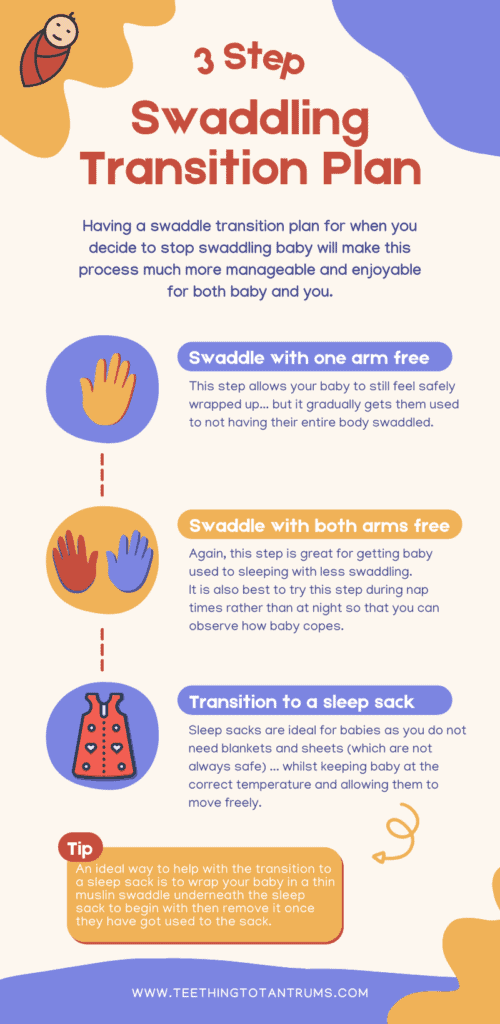
1. Swaddle With One Arm Free
The first step in this plan is to swaddle your baby as normal but leave one arm free.
This is especially useful if your baby is still experiencing the startle reflex as it also allows your baby to still feel safely wrapped up… but gradually gets them used to not having their entire body swaddled.
2. Swaddle With Both Arms Free
Next, you can then move on to swaddling baby with both arms free.
When starting, it is best to try this step during nap times rather than during nighttime sleep so that you can observe how baby copes.
You will, therefore, have the time to help baby adjust to being swaddled with both arms free as they may be a little bit fussy at first.
TOP TIP: Although going arms-free is the usual method, but some babies may prefer to have their legs free first. Ensuring your baby gets plenty of tummy time will help baby get used to pushing up onto their arms in time.
3. Transition To A Sleep Sack
A perfect way to safely transition your baby out of their swaddle is to introduce a sleep sack or a wearable blanket.
Sleep sacks are ideal for safe sleep for your baby as you do not need blankets and sheets but they keep your baby warm whilst still allowing them to move their hips freely.
There are loads of amazing sleep sacks out there, but I personally prefer the Halos’s range of sleep sacks as they offer a wide range of beautiful designs whilst being perfect for baby to transition out of swaddles.
Designed for safer sleep, this super soft cotton sleep sack from Halo keeps baby cozy without the worry of it being kicked off during the night. Providing a seamless transition from swaddle to pyjamas, a sleep sack is an ideal stepping stone to independent sleep!
Plus with a zipper that opens from the bottom, nighttime diaper changes have never been easier.
Finally, you'll be pleased to know that HALO's sleep sacks are all approved by the International Hip Dysplasia Institute for healthy hip development.
Here’s a handy video from Norton Health that provides a great visual for when to stop swaddling baby. From how to safely transition baby from a swaddle using the arms out technique, a transitory swaddle and a sleeping sack too:
A Top Trick To Try…
Deciding when to stop swaddling can be a little fiddly at times, but a trick I learnt during my nannying years to help with the transition period was to wrap your baby in a thin muslin swaddle blanket underneath their sleep sack then remove it once they have got used to the sack.
This helps baby get used to the feeling of a sleep sack whilst still feeling safe in their swaddle.
Just be sure that your baby does not get too hot if you try this trick.
REMEMBER: Keeping your baby comfortable through the transition process is key to helping them learn to sleep without a swaddle.
How Long Does Swaddle Transitioning Take?
It is important to remember that some babies will take longer than others to transition out of their swaddle and you should prepare yourself for some brief sleep disruption during this time.
On average, it can take a couple of weeks for your little one to get used to sleeping without a swaddle.
However, if you feel that your baby is not ready to be unswaddled you can always leave it for a couple of days and try again.
REMEMBER: If your baby has started to show signs of rolling over… you will have no choice but to stop using the swaddle for safety reasons.
Looking to get your little one to sleep quickly and effortlessly? Check out my Bedtime and Nap Cheat Sheet and master the art of making daytime naps and bedtimes as seamless as possible.
A bedtime & nap cheat sheet so good your little one will ask you to put them to bed...
Laura Williams "This is a life saver! I'm so glad I downloaded your bedtime & nap cheat sheet. My little one actually asked me to put him to bed last night! Unbelievable! Thank you so much!"
Click Here For The FREE Cheat Sheet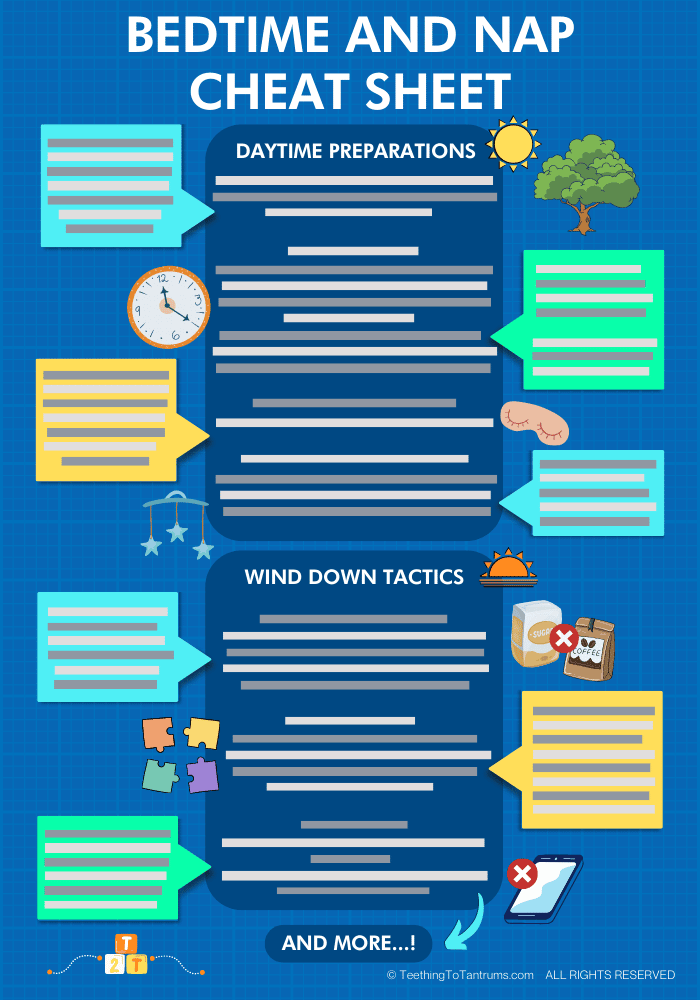
How To Get Baby To Sleep Without A Swaddle
Whilst some babies will take to being transitioned out of a swaddle with ease…
Others may struggle...
If this is the case when you stop swaddling your baby, you’re going to have to teach them to fall asleep in other ways.
1. Alternate Between Swaddling And Non-Swaddling
When you are weaning baby off swaddling, try alternating between swaddled sleep and unswaddled sleep.
The best way to do this is to alternate swaddling at nap times first.
This gives you the opportunity to monitor your little one more easily.
Then gradually, increase the number of times you stop swaddling baby when you put them down to sleep until they are swaddle free.
2. Use Transitional Products
To my mind, the best way to help your baby transition out of a swaddle is to use transitional products.
As well as the Nested Bean Sleep Sacks I mentioned earlier… the Halo SleepSack is also ideal for swaddle transitions as they allow you to safely swaddle baby from full coverage to arms free when they’re ready.
The number 1 choice from USA hospitals, the Halo sleep sack's 3-way adjustable swaddle allows both-arms-in to reduce startle reflex, 1-arm-out for self-soothing, and two-arms-out for easy transition from swaddling. The super soft fabric also makes this an incredibly cozy environment for babies to settle to sleep in.
3. Help Your Baby To Learn To Fall Asleep Without A Swaddle
Learning to fall asleep without the comfort of a swaddle can be hard for some babies…
However, having other sleep cues, sleep associations and comforts will help your baby become less reliant on their swaddle in order to fall asleep.
To help your baby on their journey to self-settling and better sleep without their swaddle try the following:
- Establish a calming regular bedtime routine.
- Give your baby a massage before bed.
- Introduce a white noise machine.
- Use a comforting nightlight
- Try a pacifier.
- Check the sleep environment. Is it too light? Or too warm?
- Make sure the sleepsack is the correct tog weight for the time of year.
Finding the right night light for your child can be quite a task. You want something safe, comforting, and practical. The Cozy Starry Night Light ticks these boxes, with eye-friendly warm lighting and an easy-to-use dimmer.
Its gentle glow makes it the best night light for feeding baby, diaper changes, or comforting your little one back to sleep.
As your baby grows the Cozy Starry Night Light's starry sky projection can provide comfort and gentle quiet time stimulation. Its soft lighting ensures a dreamy, peaceful environment, supporting your baby’s natural sleep cycle.
It really is a fantastic nightlight (at a very reasonable price!)
- Eye-friendly warm lighting with adjustable brightness.
- Includes a timer function for convenience.
- Projects a starry sky that is soothing for little ones.
- Rechargeable battery, so it's very portable.
- A USB adapter is not included for charging.
- The star projector is static without motion (however, this is ideal for very young babies and toddlers).
- Battery life varies based on the brightness settings.
White noise machines are a game-changer for your little one's sleep and having one that plays all night is a must. With a long-lasting battery, this compact and stylish white noise machine contains 21 non-stop relaxing noises, which will lull your little one to sleep night after night, no matter where you are!
REMEMBER: Do not use loose blankets in baby’s sleep environment as this will put baby at risk of suffocation.
Need More Parenting Help?
- Download our FREE Perfect Sleep Cheat Sheet. It’s a free, easy-to-use and proven formula designed for parents of 0-5 year olds to master the art of consistently undisturbed and restful sleep without the yelling, nagging or exhausting long-winded evenings.
- Check out our Parenting Toolbox. You’ll get access to expertly-chosen products that you can guarantee are the best for your little one and your wallet.
- Ready to create the calm, peaceful evenings you deserve? Then checkout our most popular course - The Bedtime Battles Masterclass

A bedtime & nap cheat sheet so good your little one will ask you to put them to bed...
Laura Williams "This is a life saver! I'm so glad I downloaded your bedtime & nap cheat sheet. My little one actually asked me to put him to bed last night! Unbelievable! Thank you so much!"
Click Here For The FREE Cheat Sheet

